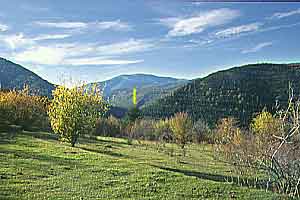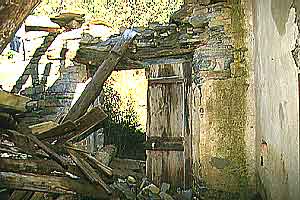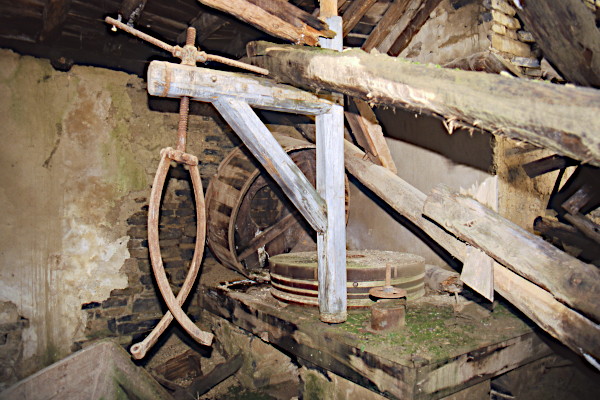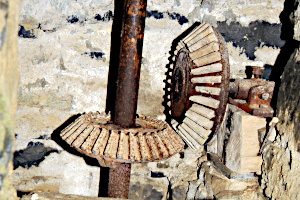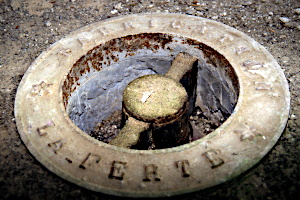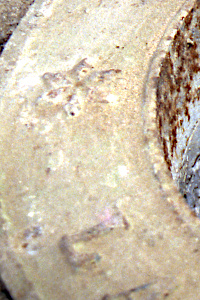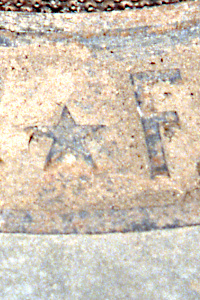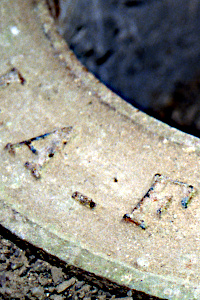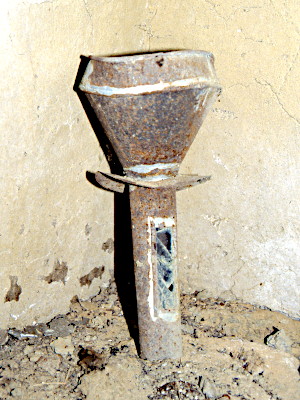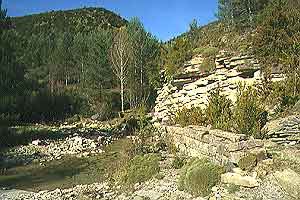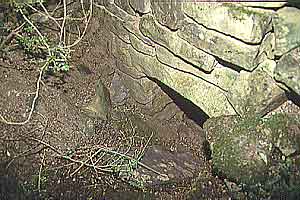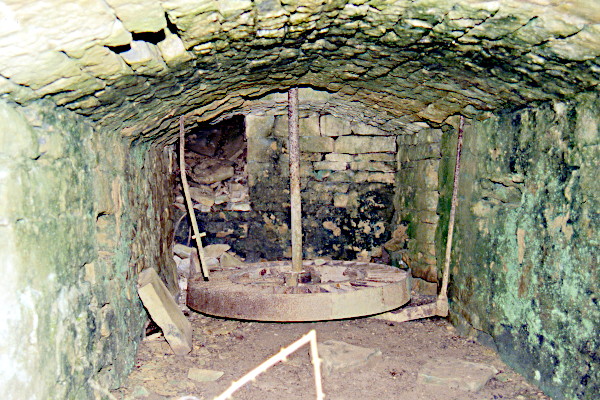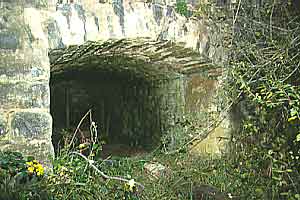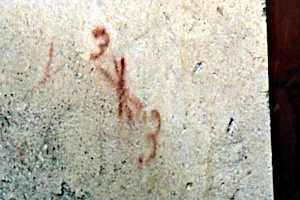Path: Introduction -
Visit the mills; catalogue - Cortillas

Mills in Alto Aragón - harinero
Cortillas

Cortillas is situated
in the Sobrepuerto. The mill, named Molino Cosme, is indicated on
every map, but not always on the right spot. The correct position is in the at the confluence with the . The easiest approach
is from Fiscal and Bergua. Although you can walk from Fiscal to Bergua, you'll gain
about an hour and a half if you drive the service road up to the end at Bergua.
Drop the car and follow the track towards .
In Sasa, walk to the west, into the valley and more or less parallel with the row of pylons.
You'll find a path down to the B. de la Valle. Keep to the path. You'll cross a first
wooden bridge and later on a second one (walking through the water is probably safer) after
which the path rises above the riverbed. Keep walking to the west and down again. You'll soon discover the mill, or the confluence of both rivulets.
Pictures: 27.x.2002

